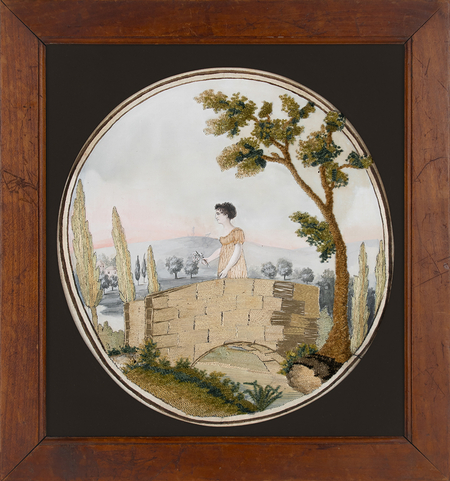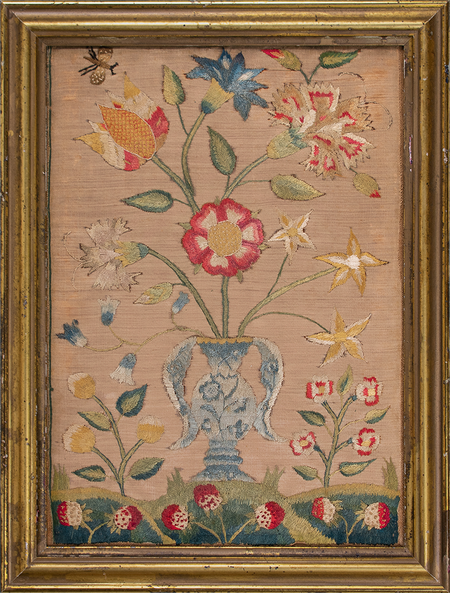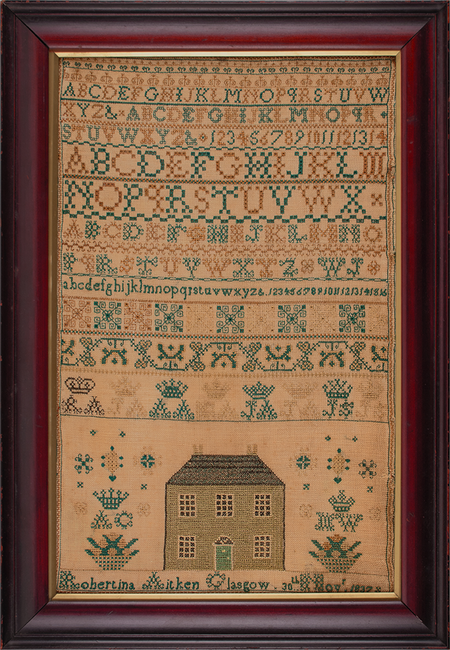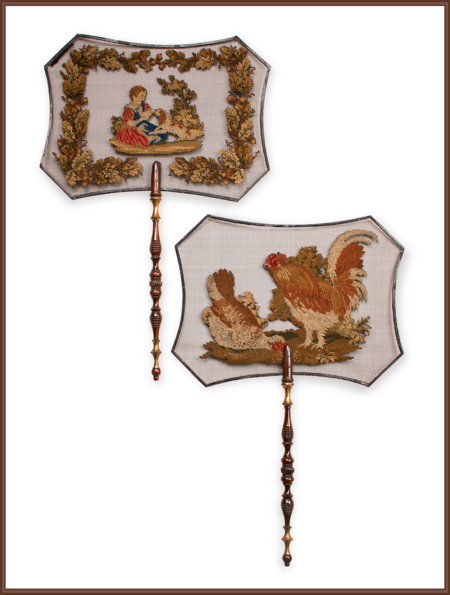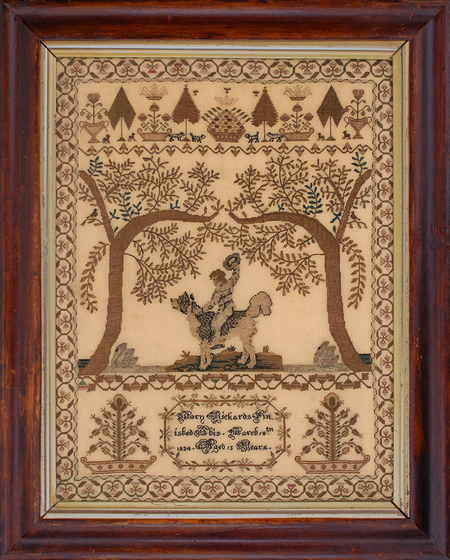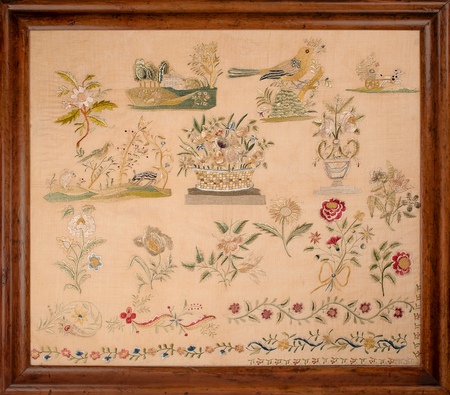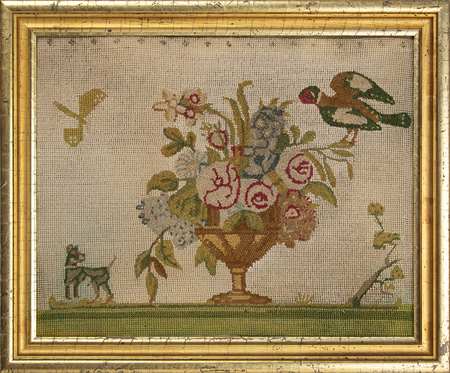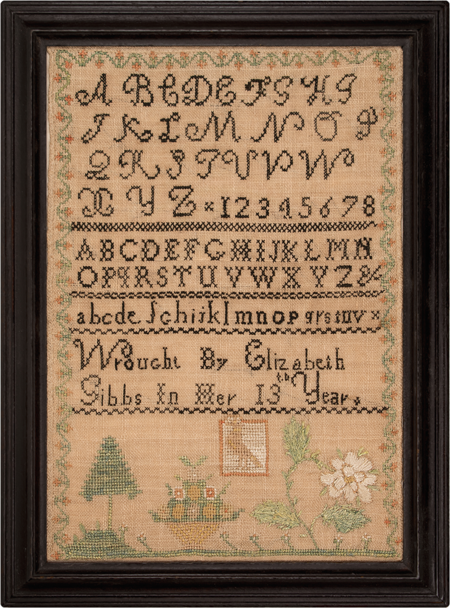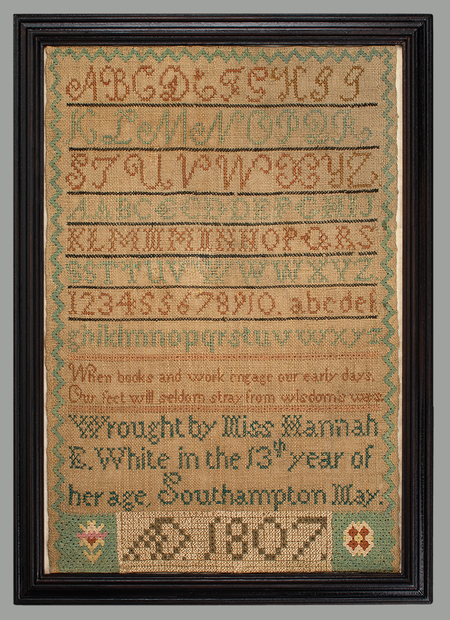Margaret Rodenboh,
Southeastern Pennsylvania, 1827
Margaret Rodenboh,
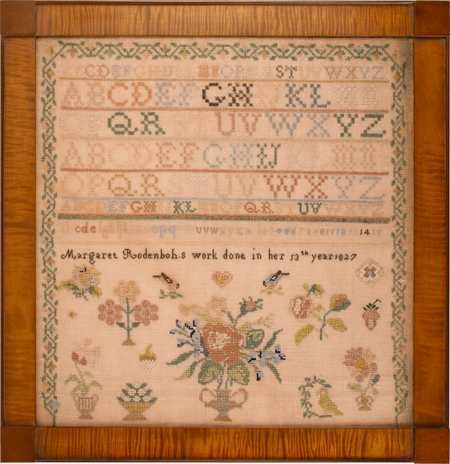
Margaret Rodenboh worked this praiseworthy sampler in 1827 when she was twelve years old (one is twelve years old when in one's thirteen year), and it serves as a fine testimony to her aptitude in the needle arts. The top half is taken up with several alphabets and one set of numbers accomplished in cross and eyelet stitch, the smallest being only one quarter of an inch high. Narrow lines of decorative stitch separate the rows and provide further embellishment, most notably the fine row of satin-stitch sawtooth above the smallest alphabet.
The bottom half of the sampler is filled with an excellent assortment of pictorial images and motifs. The balanced composition includes some of the Quaker motifs - specifically the charming little bird on a curving leafy frond and the striped vase holding a carnation that was very popular in southeastern Pennsylvania in the early 19th century. Margaret used the queen's-stitch to accomplish the strawberry and the diamond shaped motif at the upper right. The queen's-stitch is more often found on earlier samplers as it requires a great deal of patience and talent. By the 19th century many schoolmistresses were teaching less rigorous stitches and techniques.
The family originated in Germany and the spelling of the surname includes many variations such as Rodenbaugh, Ridenbough and Rodabough.
Worked in silk on linen, the sampler is in excellent condition. It has been conservation mounted into a maple corner-block frame.



